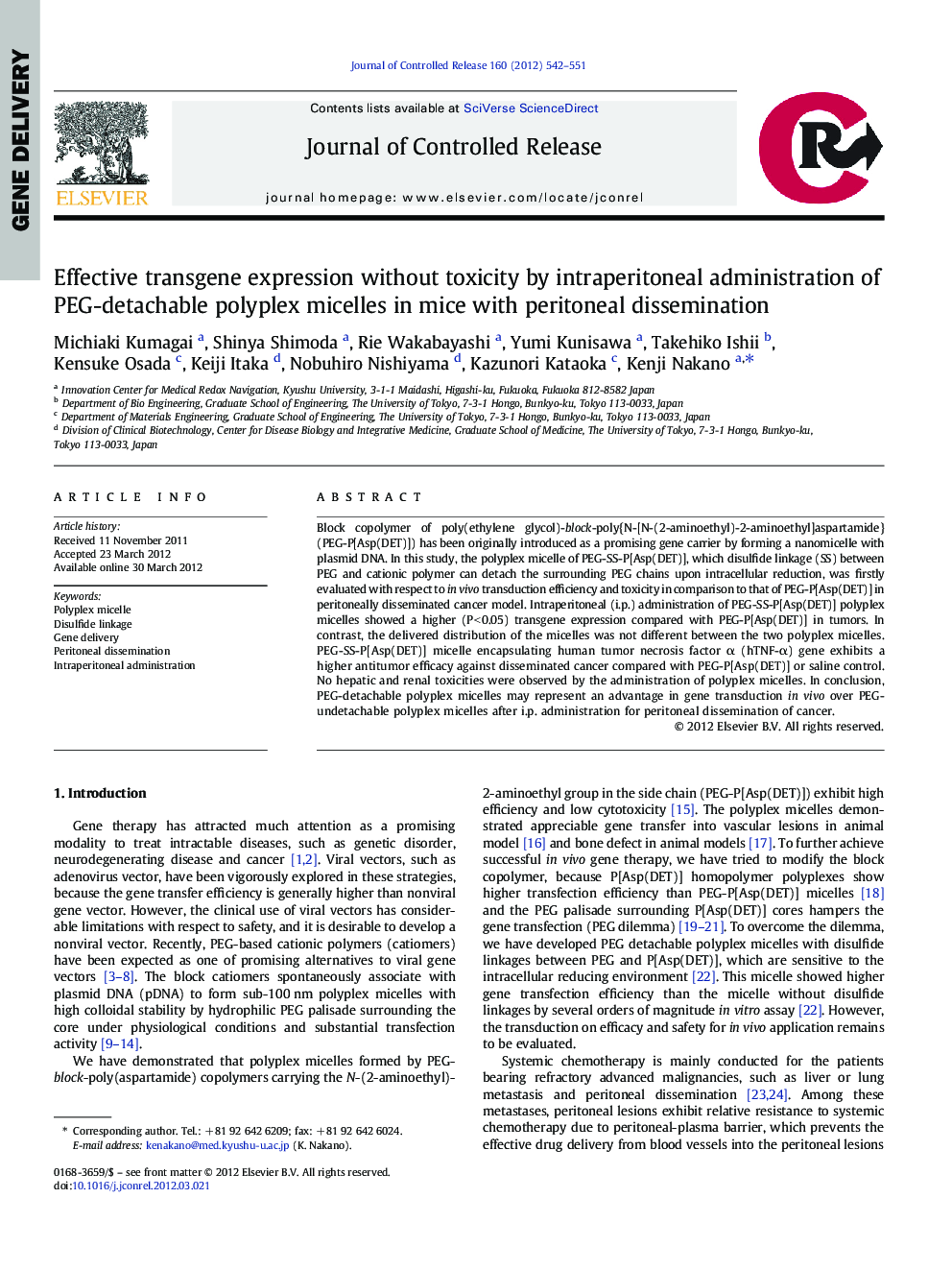| Article ID | Journal | Published Year | Pages | File Type |
|---|---|---|---|---|
| 1424503 | Journal of Controlled Release | 2012 | 10 Pages |
Block copolymer of poly(ethylene glycol)-block-poly{N-[N-(2-aminoethyl)-2-aminoethyl]aspartamide} (PEG-P[Asp(DET)]) has been originally introduced as a promising gene carrier by forming a nanomicelle with plasmid DNA. In this study, the polyplex micelle of PEG-SS-P[Asp(DET)], which disulfide linkage (SS) between PEG and cationic polymer can detach the surrounding PEG chains upon intracellular reduction, was firstly evaluated with respect to in vivo transduction efficiency and toxicity in comparison to that of PEG-P[Asp(DET)] in peritoneally disseminated cancer model. Intraperitoneal (i.p.) administration of PEG-SS-P[Asp(DET)] polyplex micelles showed a higher (P < 0.05) transgene expression compared with PEG-P[Asp(DET)] in tumors. In contrast, the delivered distribution of the micelles was not different between the two polyplex micelles. PEG-SS-P[Asp(DET)] micelle encapsulating human tumor necrosis factor α (hTNF-α) gene exhibits a higher antitumor efficacy against disseminated cancer compared with PEG-P[Asp(DET)] or saline control. No hepatic and renal toxicities were observed by the administration of polyplex micelles. In conclusion, PEG-detachable polyplex micelles may represent an advantage in gene transduction in vivo over PEG-undetachable polyplex micelles after i.p. administration for peritoneal dissemination of cancer.
Graphical abstractFigure optionsDownload full-size imageDownload high-quality image (272 K)Download as PowerPoint slide
